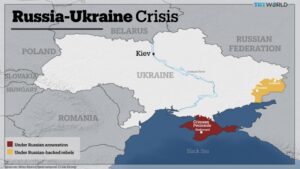Located in a seismically active region, Japan has earned the reputation of having top-class building infrastructure that could withstand tremblors as powerful as those crossing magnitude 7.
The country has established two levels of earthquake resilience: If a building is damaged by a smaller earthquake, it needs to be rebuilt from the scratch with the latest earthquake-resistant features to be included; if a building is damaged by a stronger tremor, some degree of material damage is accepted as long as no human casualty occurs.
In other regions of the world several iconic structures have been built – the Burj Khalifa, Taipei 101, and the Philippine Arena – using several architectural measures to ensure they can withstand strong earthquakes.
At the core of Japan’s earthquake-proof infrastructure are three principal designs:
1. Taishin Structure: It’s the basic earthquake-resistance design every building must follow in the country. Beams, pillars, and walls should be built with a minimum thickness that can absorb intense ground shaking. The only downside to this model is that repeated tremors or strong aftershocks could damage the structure. It’s only advisable for low-rise buildings.
2. Seishin Structure: The frame of the building should be isolated from its foundation base by placing shock absorbers, rubber layers, or seismic isolators between the two. This helps the building absorb the seismic jolts. This is optional and not required by Japanese law, but is highly recommended for high-rise buildings.
In Japan, the most preferred technology for high-rise structures is seismic isolators.
3. Menshin Structure: The base of the building sits on lead, steel, or thick layers of rubber, which allows the foundation of the building to move and minimise the force of the earthquake on upper frames. This construction method is often used in skyscrapers and high-rise apartments.
It is the most expensive method but is also considered to be the safest.
READ MORE:
Quakes that hit Türkiye ‘extraordinary,’ need to be studied, say experts
There are some other technologies that also help to construct earthquake-resistant buildings:
Top-to-toe resilience
New construction methods involve installing dampers block by block in the base frame of the building. In times of an earthquake, these dampers spring back and forth, absorbing the energy coming from the tremors.
Quake damping pendulums
This method was invented to make existing skyscrapers more resistant to the shaking of the earth, involving suspending a large, high-mass ball with steel ropes from a fixed structure at the top of the building. Based on a fairly simple rule — when the building starts to shake during an earthquake, the ball moves like a pendulum. Due to the strong inertia created by earthquake waves, the ball swings in the opposite direction against the force of the earthquake, thereby helping stabilize the building.
Invisibility Cloak
The invisibility cloak can save the structure during an earthquake. The earthquake propagates over the land as waves that create vertical movement on the surface and shake buildings. To prevent this movement, some engineers place 100 plastic rings on the foundation of a building that acts as curtains and make the waves invisible.
This method has been tested by many civil engineers abroad in the last few years and has been implemented in a small number of structures.
Modular and light steel structures
Modular and light steel structures are seen as the construction sector’s future, based on many factors such as the reduction of greenhouse gas emissions, being recyclable, sustainability, mass production, portability, and earthquake resistance.
Modular buildings are formed by the combination of one or more pre-fabricated (pre-manufactured) modules.
They can be built without a foundation, as well as easily dismantled and transported to another site.


















Be First to Comment